Introduction
There’s nothing quite like the rich, creamy sweetness of Buttercream Frosting for Cookies. Whether you’re decorating sugar cookies for the holidays, birthdays, or just because, a good buttercream makes all the difference. It’s smooth, spreadable, and perfectly sweet without being cloying. This recipe is my go-to for every occasion—easy to whip up, stable enough to hold its shape for piping, and endlessly customizable with colors, flavors, and sprinkles.
I’ve been making this buttercream for years, and it’s never failed me. It’s the kind of recipe that turns simple sugar cookies into bakery-worthy treats. The texture is soft and fluffy, but it firms up just enough after sitting, making it ideal for stacking or packaging cookies. Plus, it tastes so much better than store-bought frosting—rich butter flavor balanced by a hint of salt and vanilla.
One of my favorite things about Buttercream Frosting for Cookies is how versatile it is. You can tint it any shade with food coloring, flavor it with extracts like almond or lemon, or even add a touch of cocoa powder for chocolate buttercream. It spreads beautifully with a spatula or pipes cleanly for detailed designs. Whether you’re making Halloween spiderwebs, Christmas snowflakes, or birthday rainbows, this frosting adapts to your creative vision.
For more cookie-decorating inspiration, check out Sally’s Baking Addiction’s cookie recipes or explore frosting techniques from Wilton. Once you’ve tried this homemade Buttercream Frosting for Cookies, you’ll never go back to the canned stuff again.
Recipe Card
Print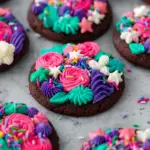
Buttercream Frosting for Cookies – Smooth, Sweet, and Perfectly Spreadable
Description
This classic Buttercream Frosting for Cookies is smooth, rich, and perfectly balanced in sweetness. It’s ideal for spreading, piping, and decorating cookies for any occasion. Easy to color, delicious to eat, and ready in minutes!
Ingredients
- 4 cups (452g) powdered sugar
- ¼ teaspoon salt
- ½ cup (113g) unsalted butter, softened
- 1 teaspoon vanilla extract
- 3 to 4 tablespoons milk (regular, low-fat, or nondairy)
- Food coloring and/or sprinkles, if desired
Instructions
- Beat the butter: In a large mixing bowl, beat softened butter using a hand or stand mixer on medium speed until creamy and smooth—about 1–2 minutes.
- Add powdered sugar and salt: Gradually mix in the powdered sugar, one cup at a time, along with the salt. Beat on low until combined, then on medium until fluffy.
- Add vanilla and milk: Pour in vanilla extract and 3 tablespoons of milk. Beat on medium-high for 1–2 minutes, until light and fluffy. Add up to 1 more tablespoon of milk if needed for a softer, spreadable texture.
- Adjust consistency: For piping, use less milk for a thicker frosting. For spreading, add a splash more milk to loosen the texture.
- Color and decorate: Divide frosting into bowls and tint with food coloring as desired. Spread or pipe onto cooled cookies, then decorate with sprinkles.
Notes
Always start with room-temperature butter for the smoothest frosting. If your frosting becomes too soft, chill it for 10 minutes, then re-whip before decorating.
Advanced Techniques
Perfecting the Texture
The key to silky Buttercream Frosting for Cookies is properly whipping the butter before adding sugar. Creaming incorporates air, giving the frosting that light, fluffy consistency we love. If it feels grainy, keep mixing—it’ll smooth out as the sugar fully dissolves into the butter and milk.
Coloring Without Compromising Flavor
Gel food coloring is the best choice because it adds vibrant color without thinning the frosting. Start with a toothpick dab of color and build gradually—especially with dark tones like red or black. For pastel shades, use just a drop and whip well.
Enhancing Flavor with Extracts
Vanilla is classic, but don’t be afraid to experiment. Almond extract adds a bakery-style richness, while peppermint or orange extracts make the frosting perfect for holiday cookies. A hint of lemon extract can also brighten up sugar cookies beautifully.
Adding a Glossy Finish
If you prefer a shinier look on your cookies, stir in a teaspoon of corn syrup at the end. It gives your frosting a slight sheen without altering the texture or flavor.
Transforming It into Chocolate Buttercream
For a quick chocolate version, add ¼ cup unsweetened cocoa powder and an extra tablespoon of milk. The result is a rich, chocolatey frosting that pairs perfectly with peanut butter or sugar cookies.
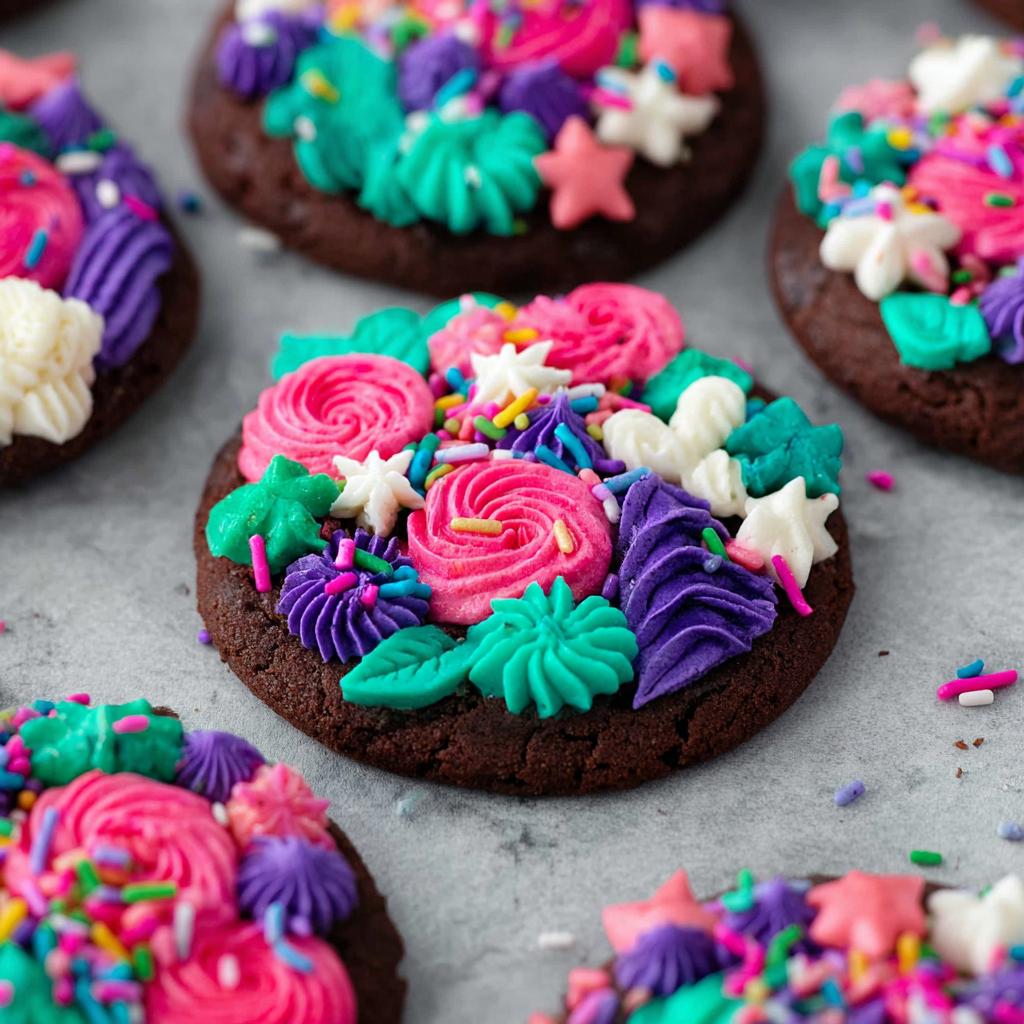
Storage, Shelf Life, and Maintenance Tips
Storing at Room Temperature
You can keep your Buttercream Frosting for Cookies covered at room temperature for up to 2 days if your kitchen is cool. Just give it a quick whip before using to restore its creamy texture.
Refrigerating for Freshness
For longer storage, refrigerate the frosting in an airtight container for up to 7 days. Let it come to room temperature before decorating, then beat briefly to fluff it back up.
Freezing for Later Use
This frosting freezes beautifully! Store in a sealed container or freezer bag for up to 3 months. Thaw in the fridge overnight, bring to room temperature, then re-whip until smooth before using.
Fixing Stiff or Soft Frosting
If your frosting is too thick, mix in milk 1 teaspoon at a time until it loosens. If it’s too soft, chill it briefly or add a few tablespoons of powdered sugar. Small adjustments can completely rebalance the consistency.
Keeping Colors Vibrant
If you’ve tinted your frosting, store it away from direct sunlight or heat—bright colors can fade over time. Cover with plastic wrap pressed directly against the surface to prevent drying or crusting.
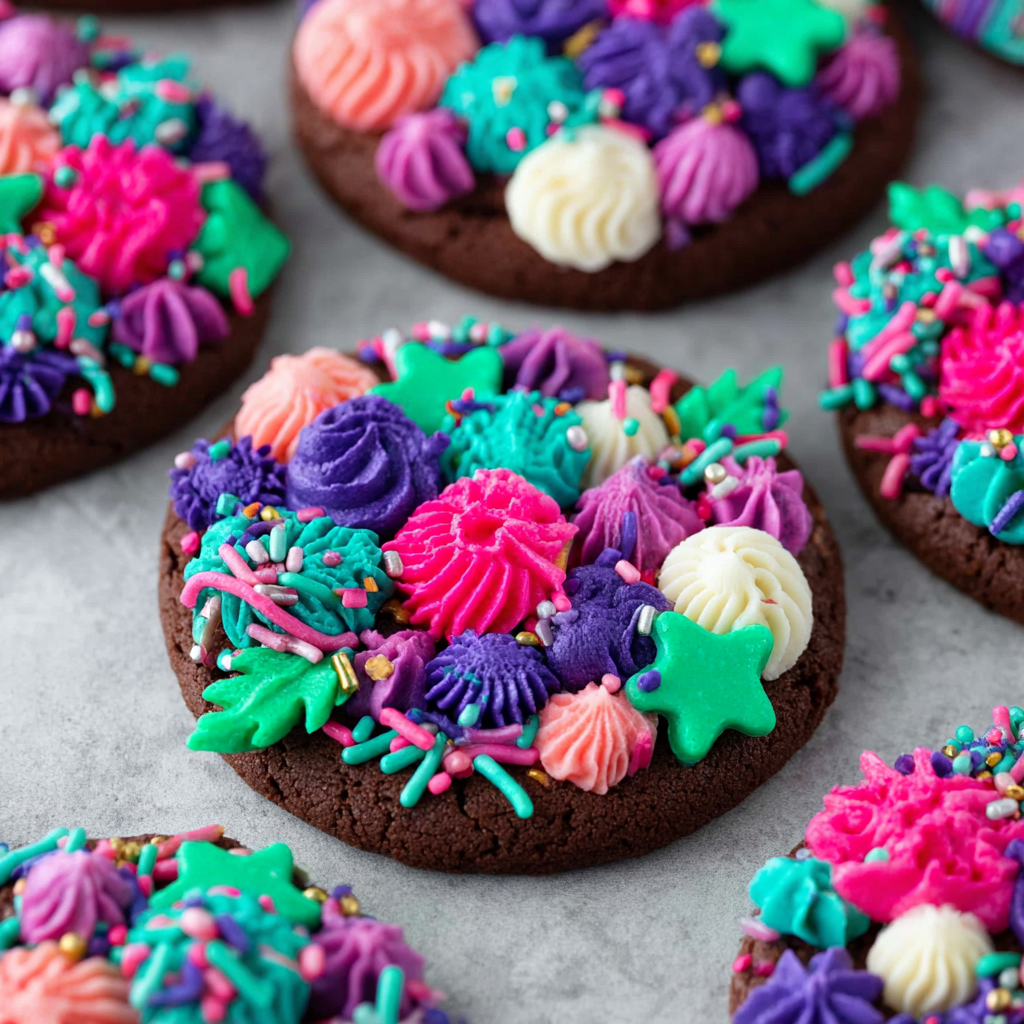
Dietary Adaptations and Substitutions
Making Vegan Buttercream Frosting
Use vegan butter (like Earth Balance or Country Crock Plant Butter) and nondairy milk such as oat, soy, or almond. The texture and flavor remain just as creamy and delicious.
Dairy-Free Version
Replace regular butter with a dairy-free alternative and choose any nondairy milk you prefer. Coconut milk adds a subtle flavor twist that works beautifully with sugar cookies.
Reduced Sugar Option
To cut sweetness, use 3 cups powdered sugar instead of 4 and add 1 tablespoon of cornstarch for stability. The frosting will still hold shape but taste less sweet—great for adults who prefer balance over sugar rush.
Flavor Variations for Seasonal Cookies
Add cinnamon, pumpkin spice, or maple extract for fall-themed cookies. In spring, try lemon zest and a touch of juice for brightness. You can make dozens of flavor profiles from this one base recipe!
Nut-Free and Allergy-Safe
This recipe is naturally nut-free, but if you’re flavoring with extracts, always confirm they’re pure and not processed in nut-handling facilities for allergy-sensitive guests.
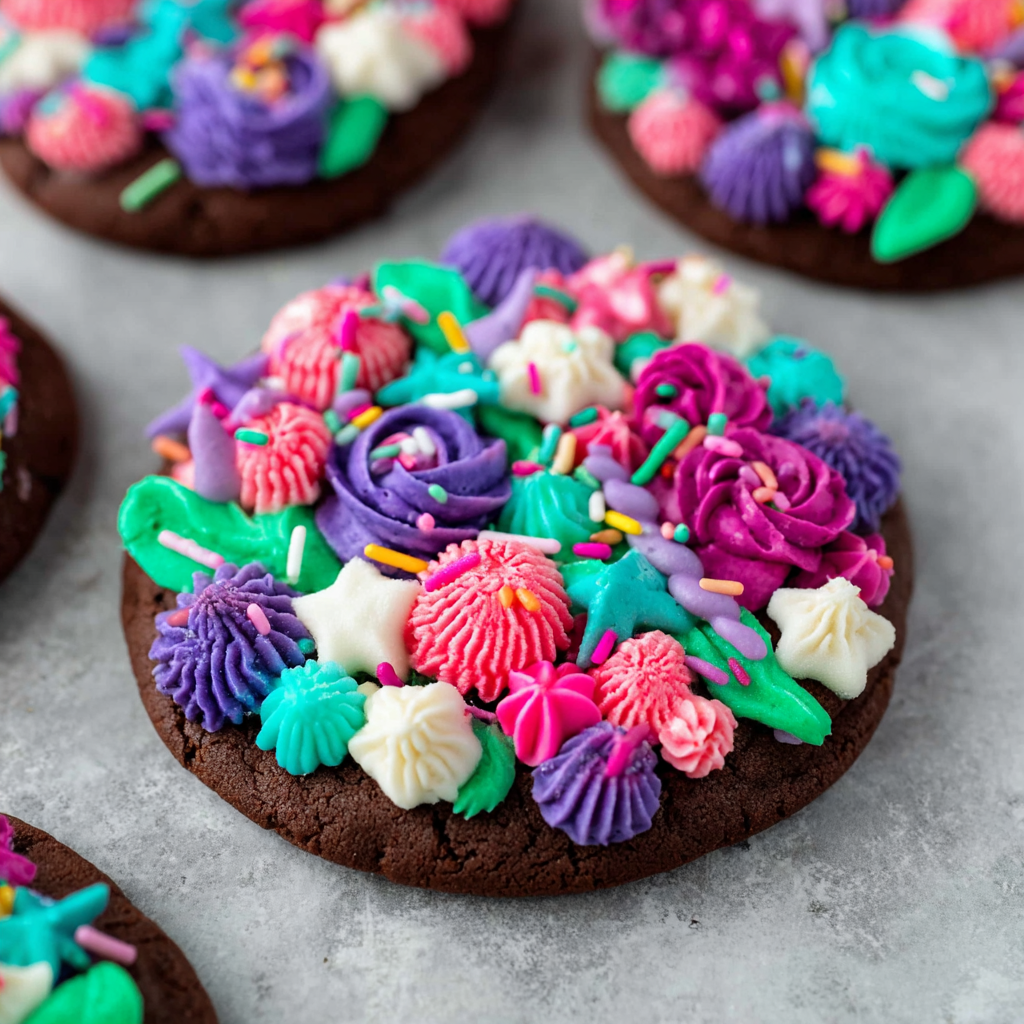
FAQs About Buttercream Frosting for Cookies
Can I Use Margarine Instead of Butter?
Yes, though the flavor won’t be as rich. Butter gives a creamy, slightly salty depth that margarine lacks. If you do use margarine, choose one with at least 80% fat for the best consistency.
Does Buttercream Harden on Cookies?
Buttercream sets slightly, forming a soft crust on the surface, but remains creamy underneath. It’s ideal for cookies you plan to stack or store without the icing smudging.
Can I Pipe Intricate Designs with This Frosting?
Absolutely! This frosting holds its shape well for piping rosettes, borders, and lettering. For best results, use a thicker consistency (less milk) and chill slightly before piping.
How Can I Make My Frosting Whiter?
If your butter gives the frosting a yellow tint, beat it for a few extra minutes to lighten it naturally. You can also add a drop of purple gel food coloring to neutralize yellow tones.
What’s the Best Way to Flavor and Color Without Overmixing?
Add extracts and color after achieving your final texture. Mix on low speed or fold gently by hand—overmixing can make the frosting too soft and introduce air bubbles that affect piping.
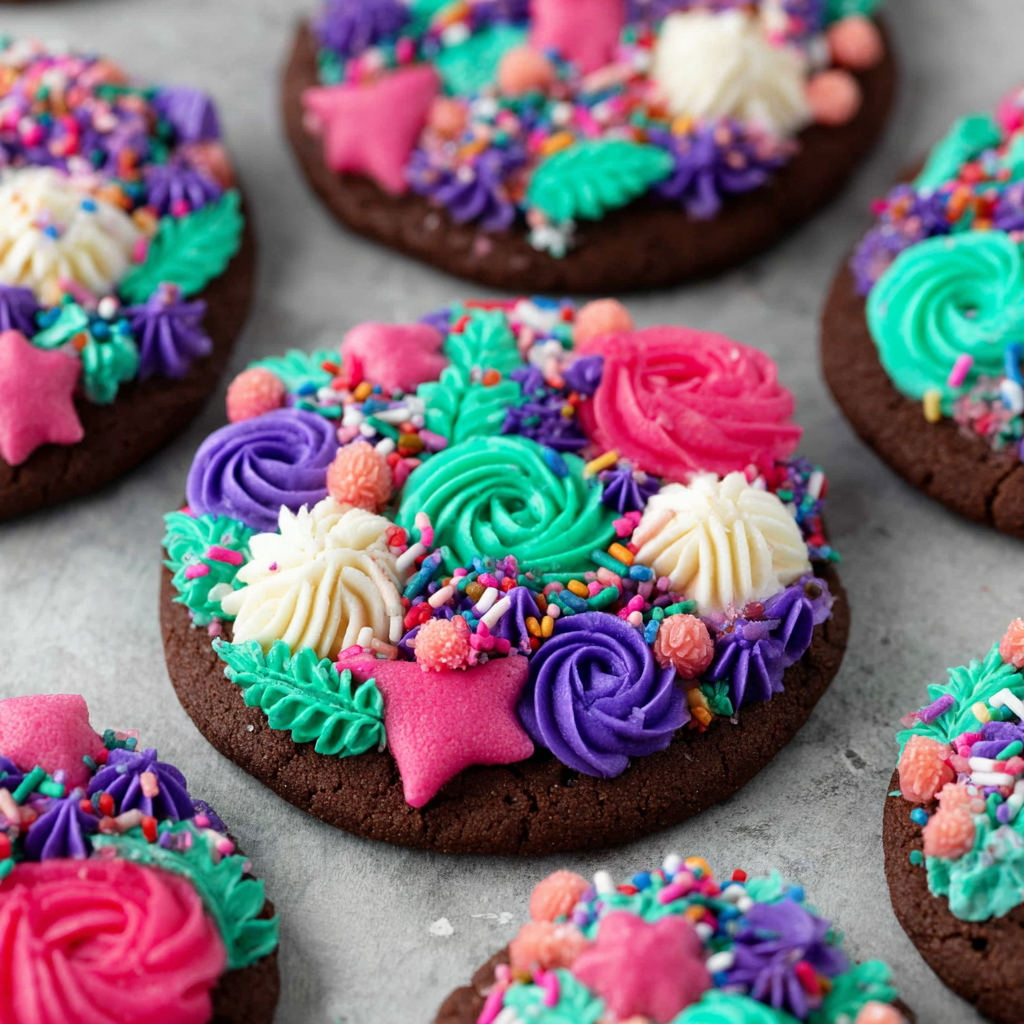
Conclusion & Final Thoughts
A good Buttercream Frosting for Cookies can transform any cookie from simple to stunning. With just a few basic ingredients—powdered sugar, butter, vanilla, and milk—you can create a frosting that’s light, creamy, and perfect for decorating. It spreads easily for casual bakes or pipes elegantly for intricate designs. Best of all, it’s endlessly adaptable: tint it any color, flavor it with your favorite extracts, or sprinkle it with seasonal decorations to suit any occasion.
What I love most about this frosting is its balance—it’s sweet but not overpowering, smooth but stable, and incredibly forgiving for beginners. Even if you’ve never decorated cookies before, you’ll find this recipe easy to master and fun to use.
So next time you’re baking sugar cookies for the holidays, birthdays, or just a weekend treat, skip the store-bought tubs and make your own Buttercream Frosting for Cookies. Once you taste that buttery, vanilla-rich sweetness, you’ll see why homemade frosting always wins. Whip it, spread it, pipe it, and enjoy the sweet satisfaction of cookies that look (and taste) straight from a bakery. 🍪✨
